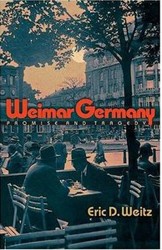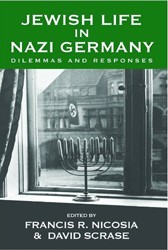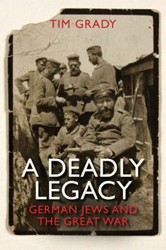What a title! Jews in Berlin: No sub-title, no hint of the tortured relationship being examined. If you didn’t know the history, those three words might seem as innocuous as Jews in Hoboken. But of course we know the history … or think we do. The story of the Jewish people in the German capital is one of incredible achievement and recurrent horror. It also encompasses astonishing twists and turns.
Examples from Jews in Berlin:
- Mass conversion from Judaism to Christianity was a widespread phenomenon among Berlin’s Jews in the nineteenth century.
- By the early decades of the twentieth century, conversions among Jews had largely disappeared.
- Jews were prominent elected officials in the post-World War I city: Hugo Heiman was head of Berlin’s City Council, and Paul Hirsch was governor of Prussia.
- At the same time, anti-Semitism “was stronger and more fanatic than it was at the time the National Socialists took power in 1933,” observed historian Golo Mann.
- In the 1920s, the empowered Jewish community poured resources into a museum to honor its past. Years in the making, the Berlin Jewish Museum opened on January 24, 1933.
- Six days later, Adolf Hitler became Chancellor.
That duality resounds throughout Jews in Berlin.
Translated from German by Michael S. Cullen, Allison Brown and Cindy Opitz, this is an updated edition of Juden in Berlin, published in 2001. All of its multiple authors have personal connections to the city. The book offers well over 100 images – some in full color, including photos, paintings, postcards, and documents. They add immeasurably to its value.
Seven chapters review Berlin Jewish history. During the late middle ages, Jews are tolerated, taxed, exploited, murdered, burnt at the stake, and expelled. Despite the ongoing mayhem, a select few Berlin Jews serve as influential physicians and financial advisers. More Jews gain rights in the late 1700s and 1800s. Barriers fall; by World War I, Jews have become German army officers. Astonishing affluence emerges: Twelve of Berlin’s twenty most prosperous individuals in 1911 are Jews or of Jewish heritage.
Then calamity slithers in. The harrowing chapter, “Jews During the Period of National Socialism,” sensitively examines how Jewish Berliners tried to navigate the encroaching inferno. And chapters on the post-war years and life after reunification never ignore the shadow of the Shoah: “Nearly every street, building, and stone in Berlin is linked to the Holocaust in some way.”
Now Berlin is again a world cultural center, and appealing to Jews: “Since the wall fell in November 1989, Jewish life in Berlin has experienced a veritable quantum leap.” Israelis and Russian Jews are bringing energy to the tiny, damaged Berlin Jewish community. And, as the foreword’s author, Carol Kahn Strauss, points out, Berlin is now a major destination for American Jewish tour groups.
Jews loved Berlin – a city that alternately freed and destroyed them. In carefully recounting this confounding tale, Jews in Berlin honors the complexity of an unfathomable relationship. Appendix, bibliography, index.





